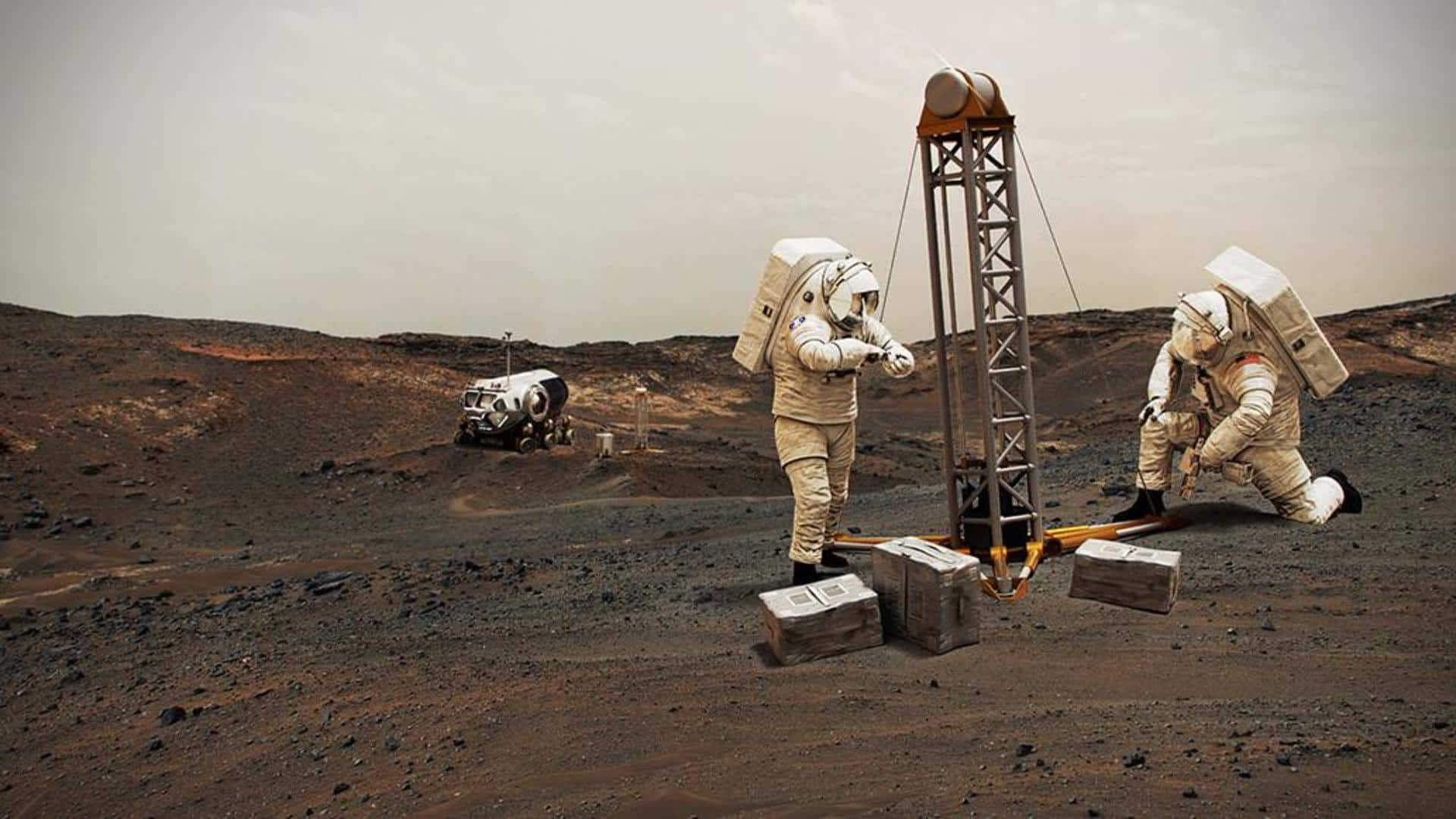
Potatoes could play a 'concrete' role in life on Mars
What's the story
Scientists, from the University of Manchester in England, have come up with cosmic concrete made up of potato starch, salt, and space dust, which could be used to construct buildings on Mars and the Moon in the future. Dubbed 'StarCrete,' the new material is twice as strong as ordinary concrete and is "perfectly suited for construction work in extra-terrestrial environments."
Context
Why does this story matter?
On any future space mission, be it to Mars or the Moon, weight reduction would be a priority, simply because heavier payloads would contribute to the cost of the overall mission. Traditional material that goes into mixing concrete has considerable weight and this is where potato-based concrete could have a role to play in construction activities on other destinations in space.
Development
Potato starch acts as binder when mixed with space dust
Researchers showed that ordinary potato starch can act as a binder when mixed with simulated Mars dust, resulting in a concrete-like material. StarCrete exhibited compressive strength of 72 Megapascals (MPa), about twice more than ordinary concrete, which has a compressive strength of about 32 MPa. When simulated Moon dust was used, the material was even stronger, clocking values over 91 MPa.
Details
25 kilograms of potatoes can produce half a ton StarCrete
Stronger concrete translates to longer lifetimes, but what could be considered the best advantage of StarCrete is its scalability. The team estimated that about 25 kilograms of dehydrated potatoes were sufficient to produce half a ton of StarCrete, which is enough to make about 213 bricks. For comparison, you would need about 7,500 bricks to build a three-bedroom house on Earth.
Information
Magnesium chloride improved the strength of StarCrete
There is another surprising finding from the study. Scientists found that magnesium chloride "significantly improved the strength of StarCrete." This common salt is present in Martian soil and is a component of human tears as well.
Implication
StarCrete could serve as a greener alternative to traditional concrete
StarCrete could have potential implications on Earth as well, serving as a greener alternative to traditional concrete. Cement and concrete cause 8% of global carbon dioxide emissions and the process by which they are produced is energy-intensive. On the other hand, StarCrete can be "made in an ordinary oven or microwave at normal 'home baking' temperatures" which could bring down the cost of production.
Previous developments
Researchers previously experimented with blood and urine as binding agents
Previously, the researchers experimented with blood and urine as binding agents for making cosmic concrete. The compressive strength of the resulting material was better than normal concrete, about 40MPa. But the process requires a frequent supply of blood, which is a major disadvantage. Further, researchers consider it "less feasible" given the hostile environment in space. To think about it, the idea is pretty unpleasant.